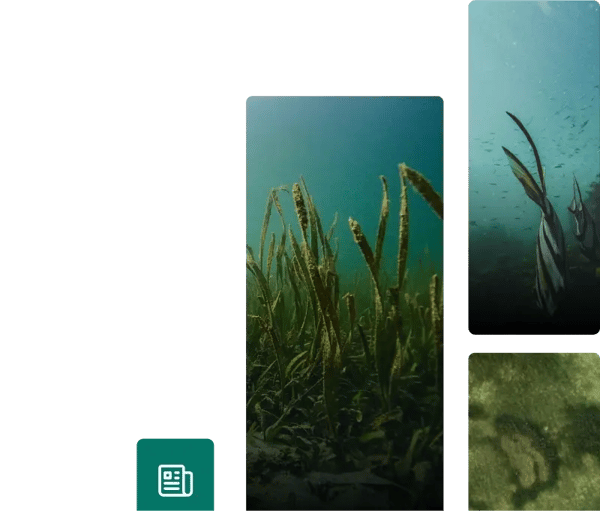Rapport du GIEC : Les éléments clés pour une meilleure compréhension
L'objectif de cet article est d'offrir un aperçu complet sur la diversité des rapports produits par le Groupe d'experts intergouvernemental sur l'évolution du climat (GIEC) ou IPCC en anglais. Nous débuterons par un bref historique des origines du GIEC, suivi d'un résumé de ses principales missions. Enfin, nous présenterons un aperçu du processus de production des rapports du GIEC et de leur accessibilité.
1. Quelques éléments historiques sur la création du GIEC
2. La mission principale du GIEC : une vision interdisciplinaire des dernières avancées scientifiques sur le changement climatique
Les rapports du GIEC offrent une analyse exhaustive des recherches scientifiques actuelles, combinant des articles revus par des pairs et des travaux issus de la "littérature grise" (c'est à dire les documents produits par l’administration, l’industrie, l’enseignement supérieur et la recherche, les services, les ONG, les associations, etc., qui n’entrent pas dans les circuits habituels d’édition et de distribution.) Ces documents sont principalement destinés aux dirigeants mondiaux, leur fournissant une base de connaissances solide pour les décisions politiques et l'élaboration de législations nationales relatives au climat, sans pour autant dicter des directives spécifiques.
Le GIEC ne mène aucune recherche propre et se contente de fournir un travail de synthèse sur la production scientifique mondiale.
L'une des principales caractéristiques du GIEC est son ADN interdisciplinaire, englobant une diversité de domaines allant de la physique du climat à l'économie, en passant par la sociologie, la gestion publique, ainsi que le droit national et international. Plus précisément, les missions du GIEC sont organisées autour de trois groupes de travail et d'un groupe dédié aux émissions de gaz à effet de serre (GES).
Les scientifiques impliqués dans la rédaction des rapports du GIEC sont une dizaine de membres du personnel permanent du secrétariat du GIEC. Ces membres permanents sont liés aux trois groupes de travail suivants :
- Le Groupe de travail I, axé sur la science physique du changement climatique.
- Le Groupe de travail II, qui examine les répercussions, l'adaptation et la vulnérabilité liées au climat.
- Le Groupe de travail III, focalisé sur les mesures d'atténuation du changement climatique.
Les rapports du GIEC résultent des différentes contributions de ces trois groupes de travail et de l'équipe spéciale et constituent une source d'information majeure pour les négociations internationales liées au changement climatique qui ont lieu chaque année à l'occasion de la conférence annuelle des parties.
3. Vue d'ensemble des rapports du GIEC
3.1. Les rapports d'évaluation
Au cours d'un cycle d'évaluation, les rapports d'évaluation du GIEC sont produits en suivant différentes étapes, y compris des ébauches de premier et de second ordre, examinées par des centaines d'experts scientifiques internationaux indépendants, sur une base volontaire. Les experts examinateurs sont sélectionnés à l'issue d'une procédure de candidature du GIEC, sur la base de leurs expérience internationales et de leurs publications antérieures.
Ils sont recrutés en fonction de la diversité de leurs antécédents afin de garantir que le plus grand nombre d'idées possible soit prises en compte pour obtenir une perspective riche sur différents sujets. Les commentaires de chaque réviseur sont pris en compte, ce qui garantit la transparence et la fiabilité des rapports.
Lors du dernier cycle d'évaluation, la décision de publier le sixième rapport d'évaluation, connu sous l'acronyme AR6, a été adoptée durant la 41e session du GIEC tenue à Gênes en février 2015.
3.2. Les rapports spéciaux
Le GIEC édite aussi des rapports spéciaux, souvent à la demande de gouvernements souhaitant des éclaircissements scientifiques sur des thématiques précises. En 2019, trois rapports spéciaux ont été publiés :
- Un rapport spécial sur le réchauffement global de 1,5 °C.
- Un rapport spécial sur l'océan et la cryosphère dans un contexte de changement climatique.
- Un rapport spécial sur le changement climatique et la terre
3.3. Les rapports de synthèse
Axés sur des enjeux politiques clés, les rapports de synthèse rassemblent les insights des rapports d'évaluation et des rapports spéciaux sur une période de cinq ans. Ces documents, structurés en plusieurs sections, peuvent aussi comporter un résumé technique.
Le rapport de synthèse du sixième cycle d'évaluation est prévu pour le deuxième trimestre de 2022, intégrant l'ensemble des apports des trois groupes de travail élaborés au cours de 2021.
3.4. Le résumé à l'intention des décideurs (SPM)
Dans chaque cycle d'évaluation, environ cinquante scientifiques sont sélectionnés pour contribuer aux efforts des groupes de travail afin de produire une première version d'un rapport spécifique du GIEC nommé "résumé à l'intention des décideurs" (SPM) ou "Summary For Policymakers" en anglais, ciblant principalement les dirigeants gouvernementaux. Ce document suit un processus de développement distinct, cherchant un consensus général sur son contenu.
Tout d'abord, chaque groupe de travail synthétise ses contributions issues du rapport d'évaluation dans un premier projet de "SPM". Cette proposition de rapport doit ensuite être approuvée ligne par ligne par les représentants des gouvernements dans le cadre d'un processus de discussion spécifique afin de convenir d'une version finale du texte. Les phrases sont affichées sur un écran visible par tous les participants et, dans le cadre du processus de réécriture, des paragraphes sont ajoutés ou supprimés si nécessaire.
Cette nouvelle version est ensuite soumise à l'examen lors d'une réunion plénière, réunissant des délégués gouvernementaux et des observateurs. Ces assemblées sont dirigées par les présidents des différents groupes de travail, afin de s'assurer que le message scientifique est fidèlement traduit dans un cadre destiné à l'élaboration des politiques.
Ce processus d'examen vise à clarifier le message des SPM tout en préservant l'essentiel des contributions scientifiques. En ce qui concerne la représentation des décideurs politiques, chaque délégation envoie environ six représentants, dont leurs experts locaux qui peuvent appartenir au GIEC, ainsi que d'autres fonctionnaires ou des experts en diplomatie/négociations.
En cas de désaccord significatif, un petit groupe composé des acteurs principaux est formé par un président de groupe de travail pour faciliter le processus et parvenir à un accord mutuel.
3.5. Les rapports méthodologiques
Les rapports méthodologiques représentent une autre catégorie de publications du GIEC. Leur objectif est de fournir des directives pratiques pour l'élaboration des inventaires nationaux de gaz à effet de serre. Ils incluent un "chapitre d'aperçu" reprenant les éléments clés du résumé pour les décideurs.
Tous les types de rapports mentionnés précédemment peuvent aussi comporter une section "Questions fréquemment posées" et une section "Matériel supplémentaire".
3.6. Un exemple de l'impact du rapport du GIEC
L'impact direct de l'ample travail du GIEC n'est pas toujours simple à quantifier. Néanmoins, dans certains cas, son influence sur les décisions politiques est évidente. Les résumés pour les décideurs, offrant un condensé des points critiques des principaux rapports d'évaluation ou rapports spéciaux, ont un effet notable sur la sensibilisation du public et des politiques au changement climatique.
Par exemple, le Pacte vert européen, annoncé par Ursula von der Leyen lors de la COP25 en 2020, s'appuie explicitement sur les découvertes du rapport sur le réchauffement de 1,5 °C du GIEC pour définir ses objectifs, y compris l'adoption d'une législation visant la neutralité climatique d'ici 2050. De manière plus large, les accords internationaux sous l'égide de la Convention-cadre des Nations Unies sur les changements climatiques (CCNUCC) se fondent sur les données fournies par les rapports du GIEC.
Conclusion
Dans cet article, nous avons commencé par présenter les origines du GIEC et donné une image globale de ses principales missions, qui consistent à cartographier l'état actuel des connaissances scientifiques sur le changement climatique et qui se caractérisent par une forte dimension interdisciplinaire.
Cette responsabilité est assurée par trois groupes de travail et une "task force" sur les émissions de gaz à effet de serre.
Enfin, nous avons décrit le processus général de production des rapports du GIEC qui sont gratuits et accessibles au public, en mettant l'accent sur le sixième rapport d'évaluation du GIEC (AR6), publié en 2022.
L'exemple de l'impact politique international des rapports du GIEC avec le cas du Green New Deal a également été mis en évidence dans ce document.
À propos de ClimateSeed
ClimateSeed est une entreprise engagée dans l'action climatique, aidant les organisations à agir à la fois au sein de leur chaîne de valeur et au-delà.
Soutenue par le fonds à impact d'AXA Investment Managers, elle est le partenaire de confiance des organisations désireuses de contribuer à la neutralité carbone mondiale. ClimateSeed propose deux offres :
- Mesure et réduction de l'empreinte carbone : Grâce à la plateforme digitale GEMS et à l'expertise de ses consultants, ClimateSeed facilite la collecte de données, la collaboration et les calculs automatisés selon des normes reconnues (GHG Protocol, Bilan Carbone®, ISO 14064). Cela permet d'élaborer des stratégies de réduction conformes aux objectifs scientifiques (SBTi).
- Contribution à des projets de séquestration et d'évitement du carbone : ClimateSeed soutient la participation à des projets générant des crédits carbone, garantissant traçabilité, transparence, et atténuation des risques, en ligne avec les Objectifs du Développement Durable (ODDs) créés par l'ONU.
N'hésitez pas à nous contacter pour explorer comment ClimateSeed peut vous aider à mesurer, réduire votre empreinte carbone ou à agir au delà de votre chaîne de valeur.
Contributor:
Mounia Mostefaoui
PhD Student at Sorbonne University
Sources:
From Our Blog
Stay up to date with what is new in our industry, learn more about the upcoming products and events.

Corporate Carbon Footprint: What You Need to Know in 2026

Low-Carbon Transition Plan: Defining and Implementing your Corporate Strategy
.jpg?width=4928&height=3264&name=sun-shining-in-rain-drops-alt-sunset-in-nature-2022-02-02-03-49-48-utc%20(1).jpg)
